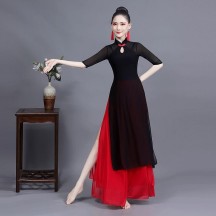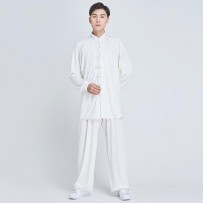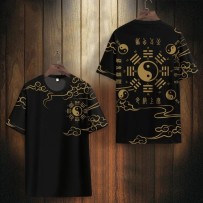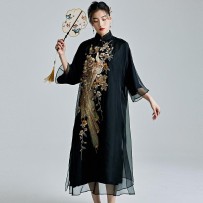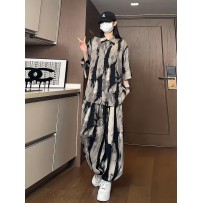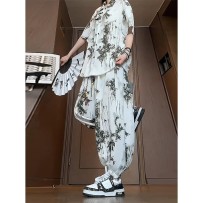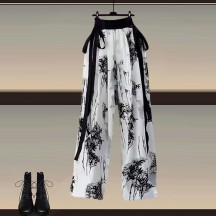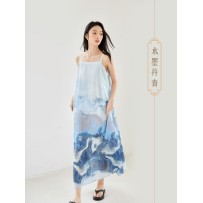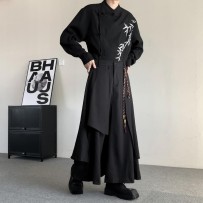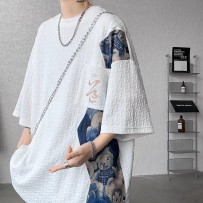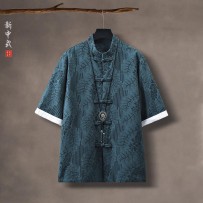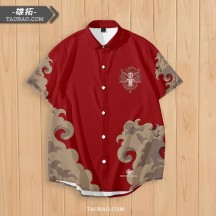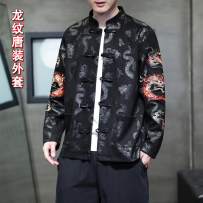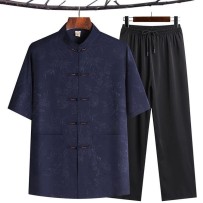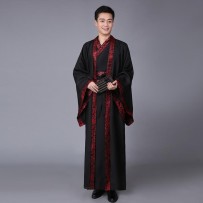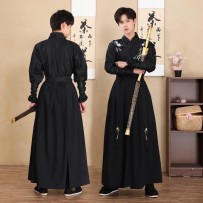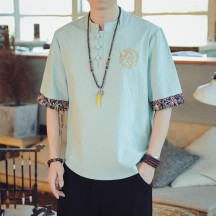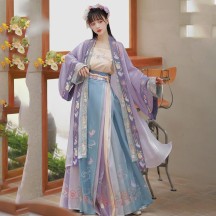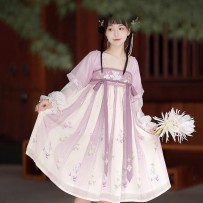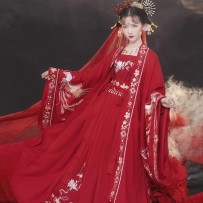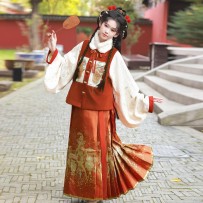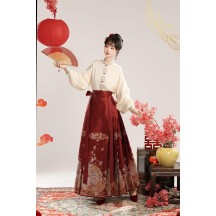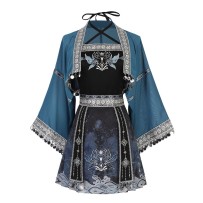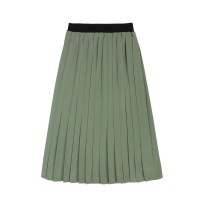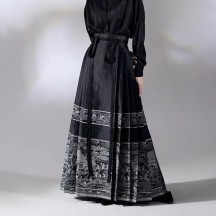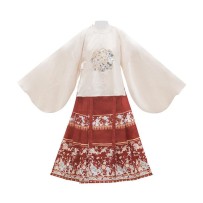New products
A Tai Chi uniform is more than just ordinary clothing — it is an essential piece of gear and a symbolic element for practicing Tai Chi. It helps practitioners get into the right mindset and better embody the cultural essence of Tai Chi.
The qipao is a traditional Chinese garment that embodies the cultural essence of the Chinese nation. Every detail reflects the wisdom and civilization of the Chinese people.
The meaning of men's Mamian skirts goes beyond their outward appearance—they represent an interpretation and expression of traditional Chinese culture. They embody a sense of vintage elegance, individuality, and a confident commitment to preserving and passing on cultural heritage.
Tang-style shirts are often imbued with a sense of cultural identity and traditional aesthetics. They not only reflect an appreciation for traditional Chinese clothing but also signify respect for Chinese culture and history.
The Lion Dance culture symbolizes good fortune, bravery, and strength. It is not only a form of folk tradition, but also a powerful emblem of national spirit. Often featured in festivals like the Spring Festival and other major celebrations, the Lion Dance plays a vital role in representing the unity of the Chinese people and the richness of cultural exchange.
Tang-style clothing is more than just attire — it is a fusion of Chinese historical culture and modern aesthetics, embodying both cultural confidence and the spirit of cultural exchange.
Hanfu carries rich cultural significance, reflecting the traditional aesthetics, etiquette, and artistic sensibilities of the Chinese nation. It is more than just clothing — it is an important symbol of Chinese culture, representing history, heritage, and a sense of national identity.
Hanfu carries rich cultural significance, embodying the traditional aesthetics, etiquette, and cultural values of the Chinese nation. It is not just clothing, but an important symbol of Chinese heritage—representing history, culture, and a sense of national identity.
Hanfu carries rich cultural significance, embodying the traditional aesthetics, etiquette, and cultural values of the Chinese nation. It is not just clothing, but an important symbol of Chinese heritage—representing history, culture, and a sense of national identity.
Hanfu carries rich cultural significance, embodying the traditional aesthetics, etiquette, and cultural values of the Chinese nation. It is not just clothing, but an important symbol of Chinese heritage—representing history, culture, and a sense of national identity.
Hanfu carries rich cultural significance, embodying the traditional aesthetics, etiquette, and cultural values of the Chinese nation. It is not just clothing, but an important symbol of Chinese heritage—representing history, culture, and a sense of national identity.
Hanfu carries rich cultural significance, embodying the traditional aesthetics, etiquette, and cultural values of the Chinese nation. It is not just clothing, but an important symbol of Chinese heritage—representing history, culture, and a sense of national identity.
Hanfu carries rich cultural significance, embodying the traditional aesthetics, etiquette, and cultural values of the Chinese nation. It is not just clothing, but an important symbol of Chinese heritage—representing history, culture, and a sense of national identity.
Hanfu carries rich cultural significance, embodying the traditional aesthetics, etiquette, and cultural values of the Chinese nation. It is not just clothing, but an important symbol of Chinese heritage—representing history, culture, and a sense of national identity.
Hanfu carries rich cultural significance, embodying the traditional aesthetics, etiquette, and cultural values of the Chinese nation. It is not just clothing, but an important symbol of Chinese heritage—representing history, culture, and a sense of national identity.
The horse-face skirt symbolizes courage and strength. Its design features the image of a horse’s face on the front of the skirt, representing the spirit and power of the horse. In ancient times, the horse-face skirt was an important element of traditional women’s clothing in southern China and stood as a symbol of wisdom and bravery in traditional Chinese culture.
The horse-face skirt symbolizes courage and strength. Its design features the image of a horse’s face on the front of the skirt, representing the spirit and power of the horse. In ancient times, the horse-face skirt was an important element of traditional women’s clothing in southern China and stood as a symbol of wisdom and bravery in traditional Chinese culture.








